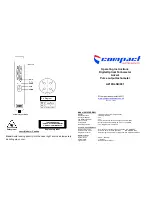
Model 4200A-SCS Parameter Analyzer Reference Manual
Section 12: Maintenance
4200A-901-01 Rev. C / February 2017
12-17
Interference
Forms of interference that can degrade measurement integrity include:
•
Electrostatic interference
•
Radio frequency interference
•
Ground loops
Electrostatic interference
Electrostatic interference occurs when an electrically charged object is brought near an uncharged
object, thus inducing a charge on the previously uncharged object. Usually the effects of such
electrostatic action are not noticeable because low impedance levels allow the induced charge to
dissipate quickly. However, the high impedance levels of many SMU or preamplifier measurements
do not allow these charges to decay rapidly, and erroneous or unstable readings may be caused in
the following ways:
•
DC electrostatic fields can cause undetected errors or noise in the reading.
•
AC electrostatic fields can cause errors by driving the amplifier into saturation, or through
rectification that produces DC errors.
Electrostatic interference is first recognizable when hand or body movements near the DUT cause
fluctuations in the reading. Pick-up from AC fields can also be detected by observing the output on an
oscilloscope.
To minimize electrostatic interference, you can use:
•
Shielding
: Possibilities include a shielded room, a shielded booth, shielding the sensitive circuit
(test fixture), and using shielded cable. The shield should usually be connected to a solid
connector that is connected to signal COMMON. Note, however, that shielding can increase
capacitance, possibly slowing down response time unless guarding is used within the test fixture.
•
Reduction of electrostatic fields
: Moving power lines or other sources away from the DUT
reduces the amount of electrostatic interference induced into the test circuit.
Radio frequency interference
Radio frequency interference (RFI) is a general term frequently used to describe electromagnetic
interference over a wide range of frequencies across the spectrum. RFI can be especially
troublesome at low signal levels, but it may also affect higher level measurements in extreme cases.
RFI can be caused by steady-state sources such as television or radio broadcast signals. It can also
result from impulse sources, as in the case of arcing in high-voltage environments. In either case, the
effect on measurement performance can be considerable if enough of the unwanted signal is present.
The effects of RFI can often be seen as an unusually large offset, or, in the case of impulse sources,
sudden, erratic variations in readings.
To minimize the effects of RFI:
•
Keep DUT as far away from the RFI source as possible.
•
Shield the test equipment, DUT, and test cables.
•
In extreme cases, use a specially-constructed screen room to attenuate the troublesome signal.
















































